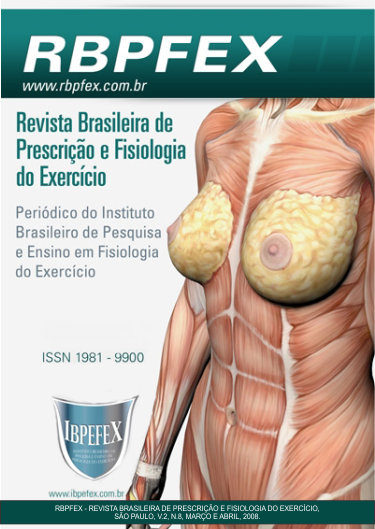Evaluation about the interference of the force training in the aerobic power training
Abstract
The focus of this work was to verify if the trainings of force modify the performance in the aerobic trainings. It was performed through the competing training. Despite the force training, the majority of the research is performed about the benefits of the physical activity that is stillover the aerobic activities, considered a form of measure health. The general objective of this work was to evaluate if the force training intervenes in the training of aerobic power. To conclude the general objective, the following specific objectives were defined: to identify the aerobic power of people; to perform the 1RM test; to perform the force test plus aerobic power; to verify and to compare the aerobic performance of people after the force training. The used methodology had a quantitative character, through the descriptive method. The sample shows that people of the masculine sex, with age between 18 and 26 years, that frequent the Extreme Academy, located in the city of Brusque/SC. The results had been gotten from the accomplishment of three tests. The first test was aerobic, running 12 minutes in the mat. As the test was trainings of force, searching to identify the 1RM of each person. The third test shows the trainings competing, evaluating the number of repetitions on the basis of the 1RM found, and finishing with the aerobic training. It was realized that there was not a great discrepancy of physical performance between the first and the second aerobic test, as well as, difference between people that practiced or not the aerobic exercise.
References
- Bompa, Tudor O.; Cornacchia, Lorenzo J. Treinamento de força consciente: estratégias para ganho de massa muscular. São Paulo: Phorte Editora, 2000.
- Fleck, Steven J.; Figueira Júnior, Aylton. Treinamento de força para fitness e saúde. São Paulo: Phorte, 2003.
- Guedes, Dilmar Pinto. Musculação: estética e saúde feminina. 2.ed. São Paulo: Phorte, 2005.
- Guedes, Dilmar Pinto. Treinamento concorrente: abordagem atual. São Paulo, 2004. Disponível em: <http://centrodeestudos.org.br/pdfs/concorrente.pdf>. Acesso em 24 jan. 2008.
- Heyward, Vivian H. Avaliação física e prescrição de exercício: técnicas avançadas. 4.ed. Porto Alegre: Artmed, 2004.
- Kamel, Guilherme. A ciência da musculação. Rio de Janeiro: Shape, 2004.
- Mattar, Fauze Najib. Pesquisa de marketing. 3.ed. São Paulo: Atlas, 2001.
- Richardson, Roberto Jarry. Pesquisa social: métodos e técnicas. 3.ed. São Paulo: Atlas, 1999.
- Roesch, Sylvia Maria Azevedo. Projetos de estágio do curso de administração. São Paulo: Atlas, 1996.
- Simão, Roberto. Treinamento de força na saúde e qualidade de vida. São Paulo: Phorte, 2004.
- Simão, Roberto. Fundamentos fisiológicos para o treinamento de força e potência. São Paulo: Phorte, 2003.
- Simão, Roberto. Fisiologia e prescrição de exercícios para grupos especiais. São Paulo: Phorte, 2004.
- Uchida, M.C.; Navarro, F.; e colaboradores. Manual de musculação. São Paulo: Phorte, 2003.
- Zatsiorsky, Vladimir. Ciência e prática do treinamento de força. São Paulo: Phorte, 1999.
- Wilmore, Jack H.; Costill, David L. Fisiologia do esporte e do exercício. 2.ed. São Paulo: Manole, 2001.
Authors who publish in this journal agree to the following terms:
- Authors retain the copyright and grant the journal the right of first publication, with work simultaneously licensed under the Creative Commons Attribution License BY-NC which allows the sharing of the work with acknowledgment of the authorship of the work and initial publication in this journal.
- Authors are authorized to enter into additional contracts separately for non-exclusive distribution of the version of the work published in this journal (eg, publishing in institutional repository or book chapter), with acknowledgment of authorship and initial publication in this journal.
- Authors are allowed and encouraged to post and distribute their work online (eg, in institutional repositories or on their personal page) at any point before or during the editorial process, as this can bring about productive change as well as increase impact and impact. citation of published work (See The Effect of Free Access).






